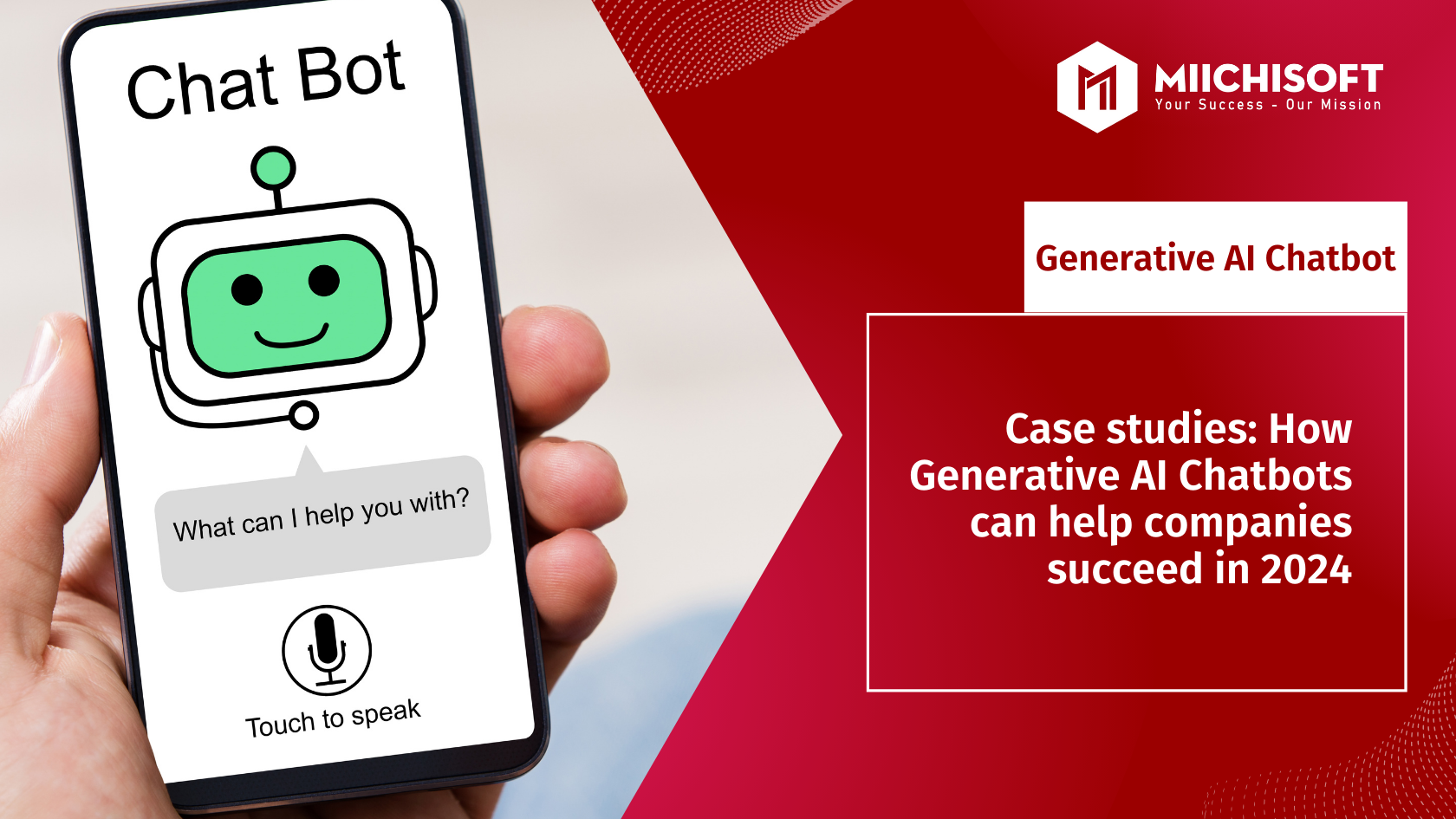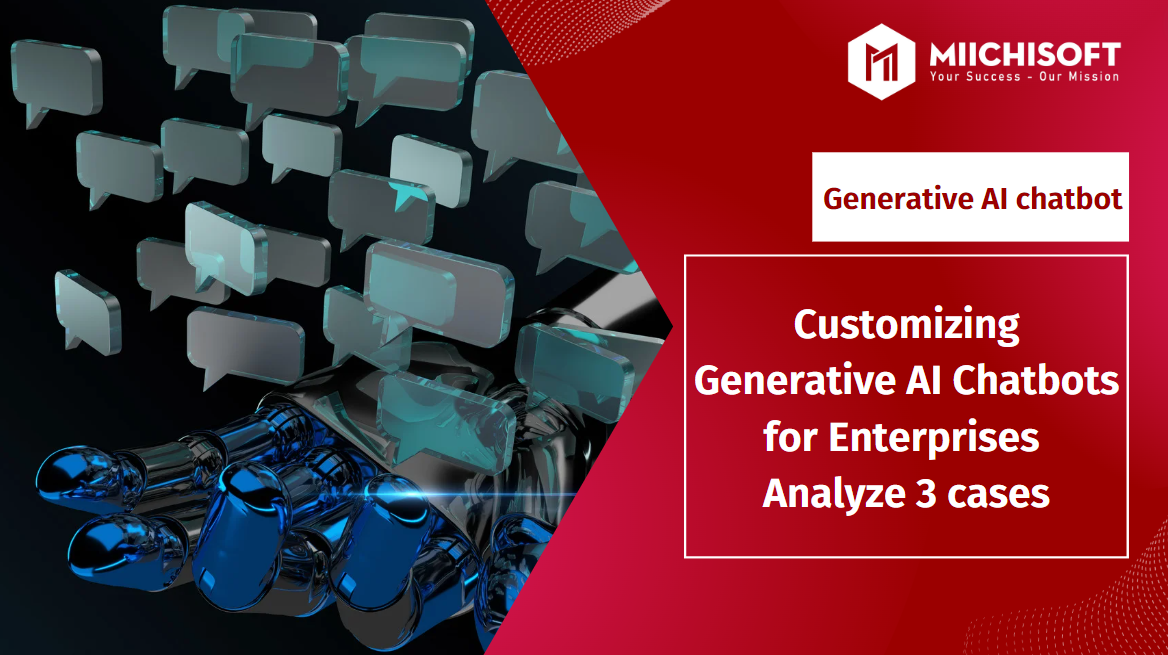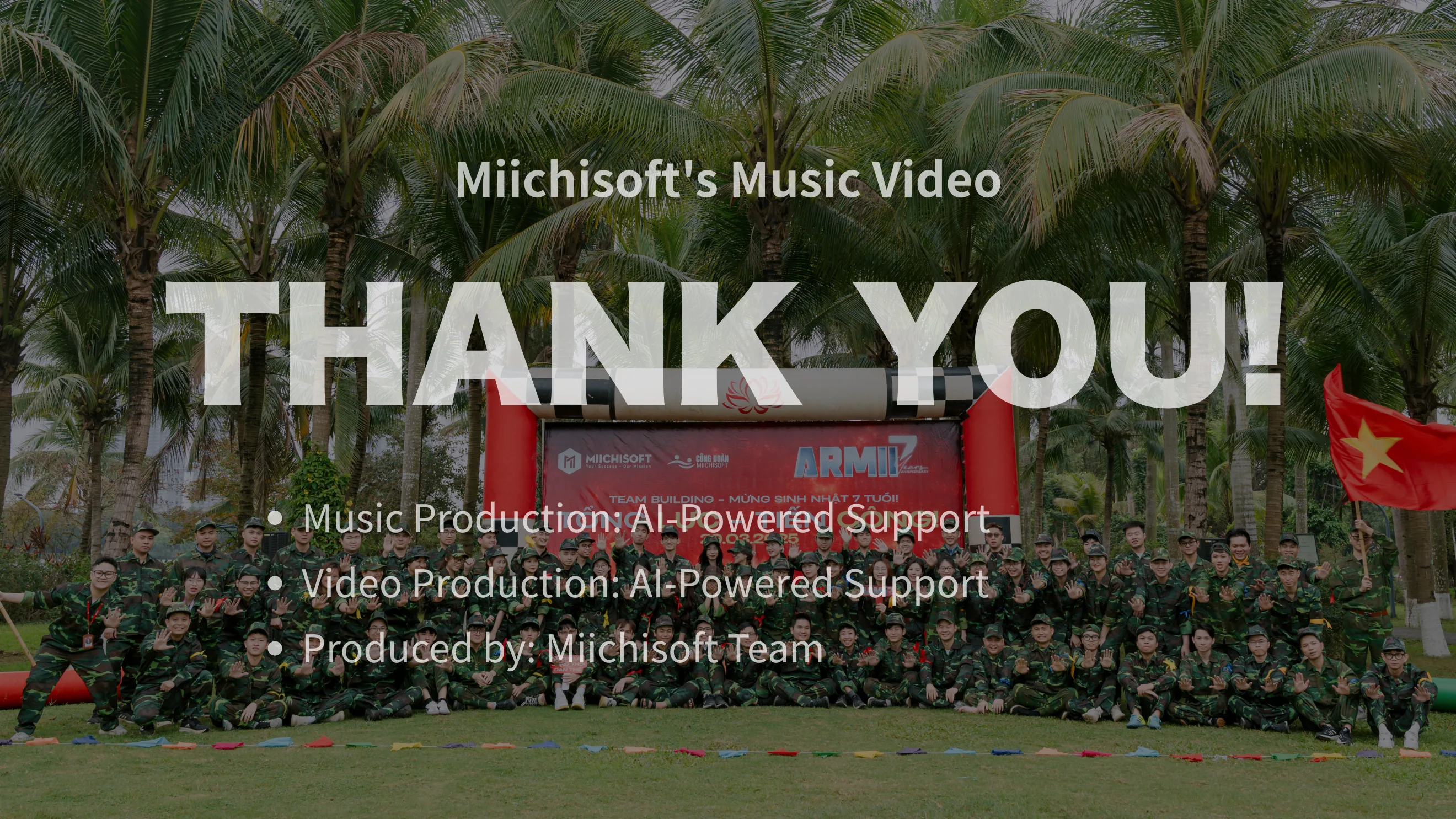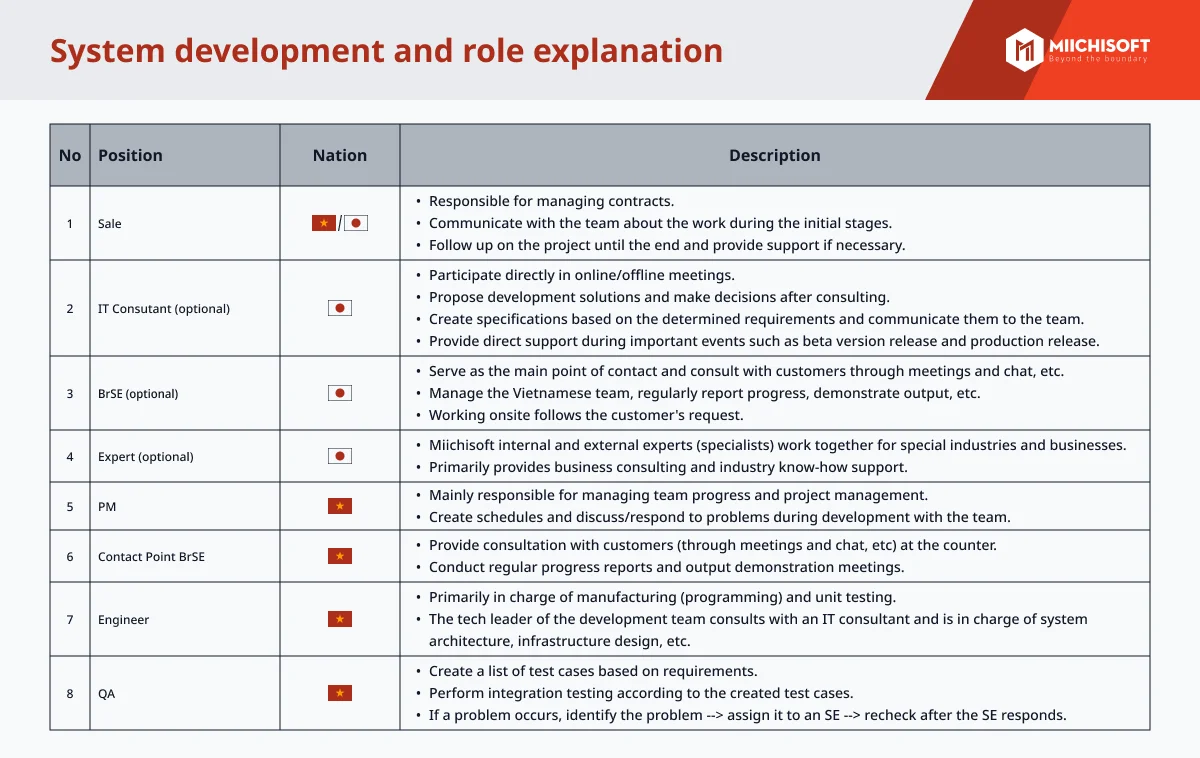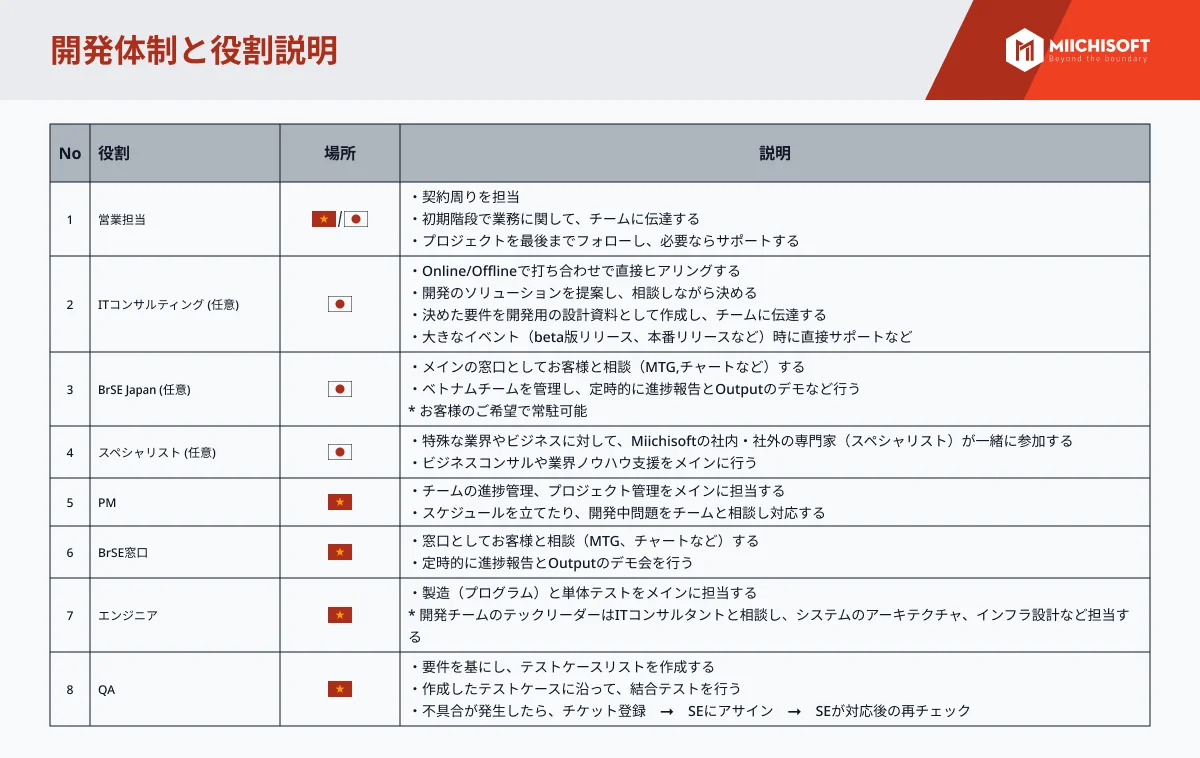Low-code AI platforms have become a strategic choice for businesses aiming to accelerate development, reduce pressure on technical teams, and seamlessly deploy solutions across both on-premise and hybrid infrastructures. This is especially critical in Japan, where companies are actively driving digital transformation but facing three major challenges: a shortage of tech talent, high implementation costs (IPA, 2023), and legacy systems (METI, 2024).
In this article, we will explain the concept of low-code AI platforms and analyze the 5 most popular platforms in 2025.
1. What is a Low-code AI Platform?
AI low-code platforms are the tool that allows users to build automated workflows and smart applications through a visual, drag-and-drop interface, without requiring extensive coding knowledge. By integrating artificial intelligence (AI) and machine learning (ML) technologies, these platforms can handle complex tasks such as data analysis, decision-making, and intelligent interactions. Both non-technical users and technical experts can leverage them to optimize workflows for individuals and businesses.
According to IDC Japan (2024), more than 68% of businesses in the Asia-Pacific (APAC) region are facing a shortage of software engineers, while the demand for in-house AI deployment is surging. In this context, AI low-code tools have emerged as a practical solution, offering automated error detection that helps businesses cut development time by up to 60% and significantly reduce maintenance costs.
Thanks to flexible deployment models, cloud, on-premises, or hybrid, these platforms can seamlessly integrate with existing IT infrastructures. On-premises and hybrid setups, in particular, allow businesses to store data within their internal systems, enhancing control and ensuring data security. This is a critical factor in Japan, where over 80% of enterprises prioritize internal data protection.
In summary, AI-powered low-code platforms not only shorten development cycles but also address the shortage of specialized IT talent. With their accessibility and ability to simplify workflows, low-code AI is a strategic solution that every business should consider in their digital transformation journey.
Learn more: Time Waste Is Silently Draining Your Business: 3 Smart Steps to Integrate AI into Business Workflow
2. Top 5 Low-code AI Platforms
2.1 n8n
n8n is an open-source tool highly regarded by the developer community for its flexibility and deep customization capabilities. Unlike many platforms that only offer drag-and-drop features, n8n allows users to write JavaScript or Python code directly within each workflow step (known as nodes). This enables the creation of complex processes with multiple branching conditions.

Source: n8n
Key advantages of n8n:
・Flexible deployment: Can be self-hosted on private servers for full control over internal data, or used via n8n’s managed cloud service.
・Cost-efficient execution-based pricing: Pricing is based on the number of workflow executions, making it ideal for long and complex workflows while minimizing costs.
・Seamless AI integration: Offers over 2,000 pre-built workflow templates connected with GPT, HuggingFace, Claude, and more to power chatbots, text analysis, or automated content generation.
・Developer-friendly: A visual interface with advanced configuration options, such as debugging, editing request headers, creating webhooks, and handling advanced APIs.
n8n is an ideal choice for mid-sized and large enterprises seeking a flexible automation solution with self-hosting capabilities to ensure data security. By leveraging n8n, businesses can streamline operations, reduce integration costs, and maintain better stability and control over data.
2.2 Dify
Unlike the flexibility-oriented approach of n8n, Dify stands out for its strong focus on leveraging artificial intelligence to handle tasks more intelligently and proactively. Users can easily integrate models such as OpenAI’s GPT, Anthropic’s Claude, or Meta’s Llama, along with other open-source models, with just a few simple configuration steps. This eliminates the need for businesses to build AI infrastructure from scratch while enabling quick deployment of features like virtual assistants, semantic analysis, or automated content generation.
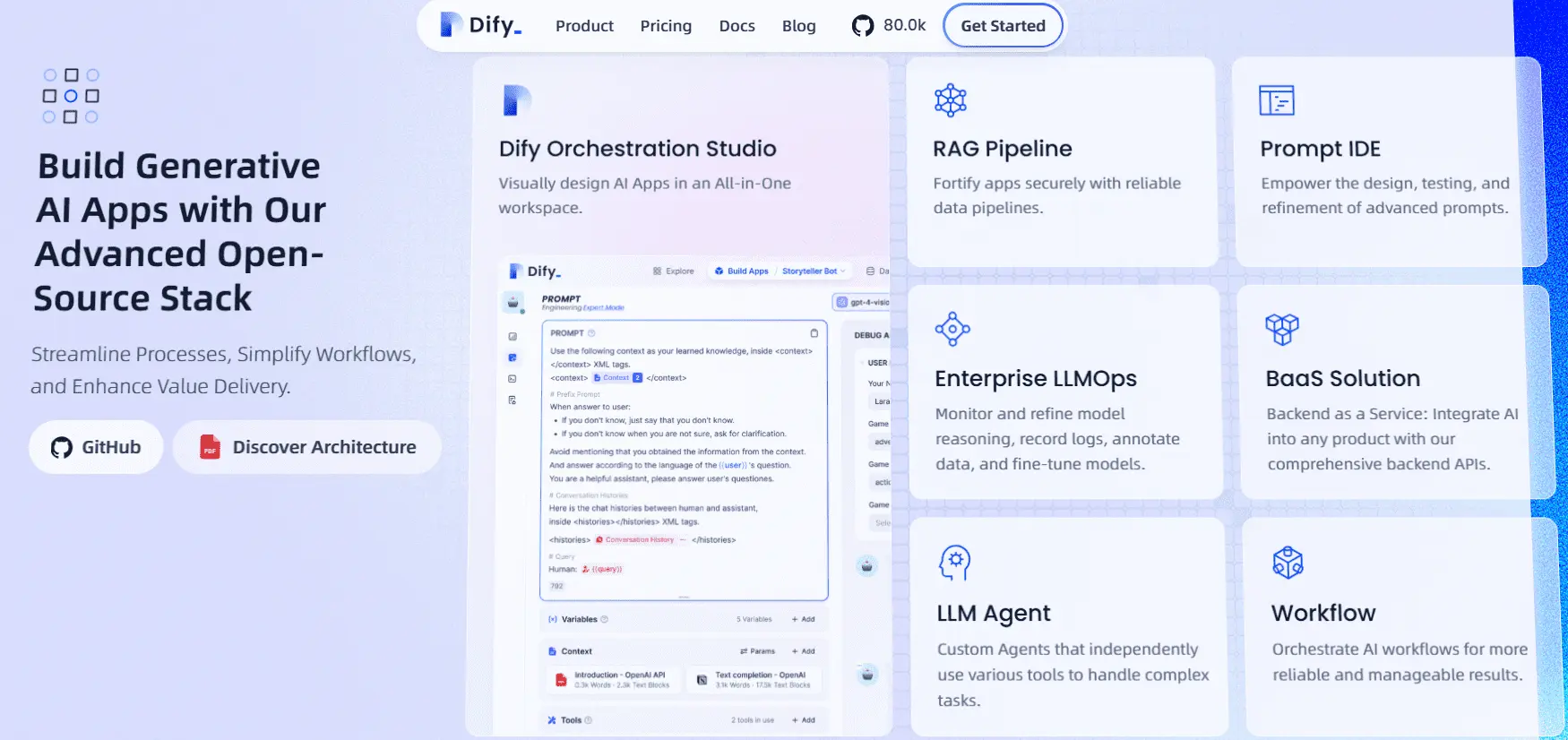
Source: Dify
Beyond LLM model integration, Dify offers ready-to-use templates that allow businesses to launch and operate AI applications directly within daily workflows:
・Intelligent chatbots powered by internal knowledge through Retrieval-Augmented Generation (RAG), ideal for building customer support centers or internal assistants.
・Two distinct operation modes:
Chatbot mode: Design and train conversational flows with users.
Workflow mode: Set up automated action chains when the AI agent detects specific triggers.
・System-wide AI agent integration: Virtual assistants can go beyond answering queries by calling APIs, sending emails, generating reports, or orchestrating automated processes.
With its broad LLM integration and pre-built template library, Dify is recognized as a user-friendly AI-powered low-code platform. It shortens deployment time and is well-suited for businesses looking to quickly embed AI into their operations.
2.3 Make
Make is also one of the most popular low-code AI platforms. It stands out for its ability to visualize workflows, its user-friendly interface, and its capability to connect with over 1,500 popular applications. Whether for non-technical users or development teams, Make provides a flexible set of tools to design, operate, and scale automation processes effectively.

Source: Make
Key features that make Make a top choice for small and medium-sized businesses include:
・Integration with over 1,500 popular applications such as Gmail, Notion, Slack, Airtable, and Google Sheets, enabling seamless data flows across tools.
・Customizable workflows with advanced logic, supporting conditional branching (if-else), error retry mechanisms, and automated alerts.
・Flexible, operation-based pricing with no limits on the number of workflows, helping businesses optimize costs when running multiple small-scale workflows.
This makes Make especially suitable for businesses looking to gradually scale their automation processes or test various scenarios while maintaining tight control over costs and resources.
2.4 activepieces
If your business is looking for a platform that offers deep integration with AI agents through the Model Context Protocol (MCP), activepieces is an ideal choice. In fact, MCP is an open protocol that connects AI models (especially LLMs like Claude and ChatGPT) with external tools, data, or services through a unified standard, eliminating the need to build separate integrations for each AI tool or application.
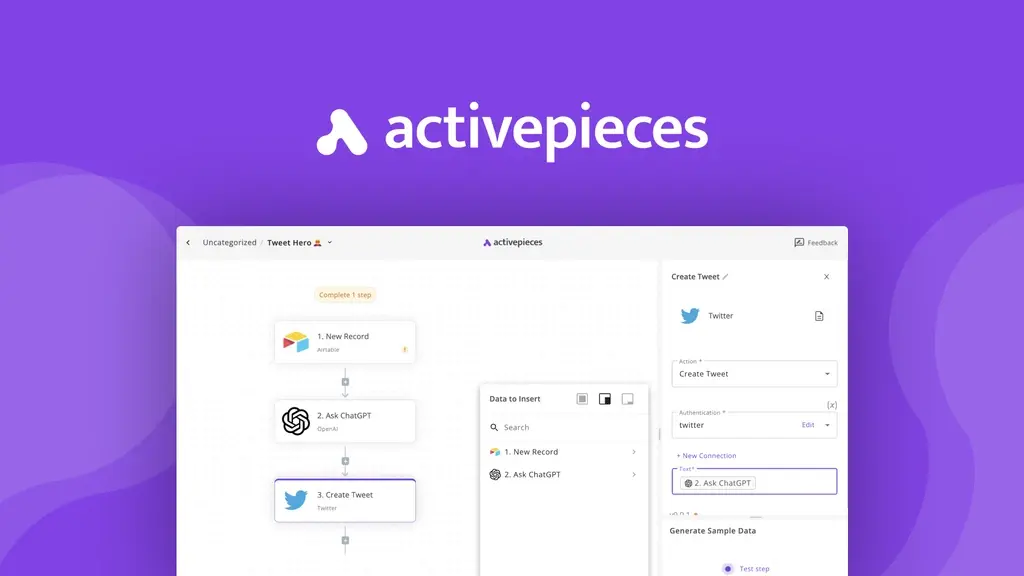
Source: acticepieces
Unlike many low-code AI platforms that only support API calls or embedding AI into a few steps, activepieces builds the largest open-source MCP ecosystem today, with over 280 MCP servers. This allows AI agents to access a wide range of systems, make autonomous decisions, execute software actions, and respond contextually, almost like a real employee.
Key features of activepieces include:
・Reusable MCP flows: AI agents can trigger workflows autonomously and deliver personalized responses based on users or specific scenarios.
・Flexible workflows without template limitations enabling seamless connection of AI agents with internal systems, whether for simple tasks or complex enterprise-level operations.
・Deep data and application integration through a unified interface significantly reduces the time required to deploy AI into daily operations.
In addition, activepieces supports self-hosting for enhanced data security and allows custom logic development in TypeScript with hot reload, which shortens development and testing cycles. This makes it a highly attractive option for small businesses and startups aiming to build fully customized automation systems without being locked into a vendor’s framework.
2.5 Node-RED
Node-RED is a specialized low-code platform designed for physical device (IoT) applications and real-time data processing.
Its key strength lies in seamless connectivity with industrial devices, sensors, and IoT systems through widely used protocols such as MQTT, Modbus, and OPC-UA. This enables businesses to instantly collect data from machines and production systems, optimizing monitoring, analysis, and real-time response to events.
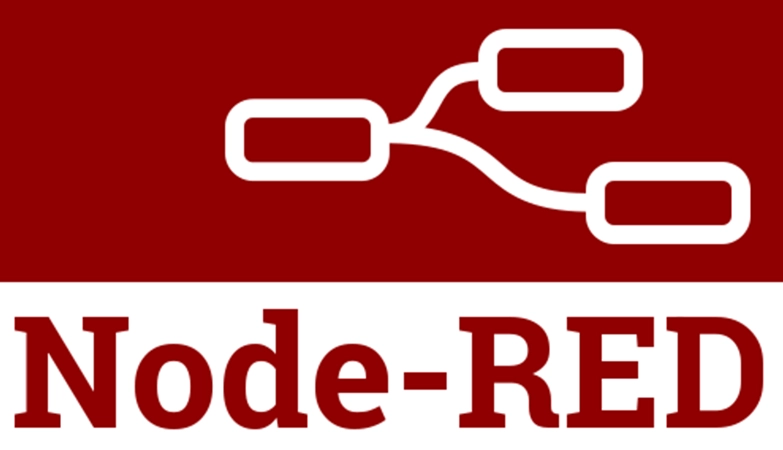
Source: Node-RED
While Node-RED offers a convenient drag-and-drop interface for connecting devices, APIs, and network services, it does not have AI built into its core. Instead, the platform supports AI integration through extension nodes, a flexible approach that aligns with its specialization in data processing and device connectivity.
Key features of Node-RED include:
・Real-time dashboards: Create interactive dashboards to visualize data from sensors and IoT systems.
・Cloud compatibility: Seamless integration with cloud services such as AWS IoT, Azure IoT Hub, and Google Cloud IoT, supporting both hybrid and cloud-native solutions.
・Advanced workflow control: Supports complex workflows with conditional logic, retries, and error handling to enhance application stability.
In summary, Node-RED is an optimal choice for businesses in manufacturing, logistics, smart agriculture, or startups developing remote monitoring and control solutions, thanks to its strong capabilities in device connectivity and real-world data processing.
3. Quick Comparison of the Top 5 Low-Code AI Platforms
With the rapid growth of low-code AI platforms, choosing the right tool depends not only on its features but also on your organization’s goals, internal technical capabilities, and desired level of flexibility.
Below is a quick comparison of the 5 leading low-code AI platforms, highlighting their key strengths to help you determine which one best fits your business needs.
| Platform | Strengths | AI Integration | Deployment Model (Hosting) | Pricing Model | Best Fit |
| n8n | Strong data control, advanced API customization, supports complex workflows | GPT, Claude, HuggingFace… | Self-host / Cloud | Execution-based pricing | Mid-to-large enterprises requiring high security and complex integrations |
| Make.com | Intuitive interface, 1,500+ pre-built SaaS integrations, easy to operate | Basic AI via plugins | Cloud | Operation-based pricing | SMBs needing fast deployment with minimal technical resources |
| Dify | Build chatbots, AI assistants, RAG, and contextual AI workflows | Strong LLM-native AI agent capabilities | Self-host / Cloud | Free (self-hosted), usage-based pricing for cloud | Companies looking to quickly integrate AI for customer support or internal tasks |
| activepieces | Flexible data connections, powerful AI agent programming, open-source MCP | AI-first, supports TypeScript custom logic | Cloud / Self-host option | Free (self-hosted), paid plans available | Tech startups or companies seeking deep AI customization |
| Node-RED | IoT device connectivity, real-time dashboards, industrial monitoring | AI via extension nodes | Self-host / Edge / Hybrid | Free | Manufacturing, logistics, or smart agriculture businesses |
If you’re still in the exploration stage, Dify and n8n are worth considering. These low-code AI platforms are highly user-friendly, making it easy to get familiar with their interfaces and quickly build automated workflows.
Check out how n8n streamlines hundreds of CVs: Guide to Building an AI Workflow with n8n.
4. Want to boost productivity with low-code AI? Let’s talk.
Choosing low code AI platforms not only accelerates solution deployment but also optimizes costs and resources in the long run. However, successful implementation requires a clear understanding of internal needs and the support of a partner with deep expertise in both technology and operational environments.
At Miichisoft, we provide consulting and implementation support for AI low-code platforms, especially Dify and n8n, with solutions tailored to the unique requirements of each industry. We offer custom domain/self-hosted deployment, enabling businesses to maintain complete control over their data and eliminate security risks that come with public platforms.
With 7+ years of experience and 150+ successful projects in the Japanese market, Miichisoft’s bilingual Japanese-Vietnamese engineers not only excel in technology but also deeply understand business processes and workflows of Japanese enterprises. We ensure a fast, optimized, and seamless deployment process that fits perfectly into your current infrastructure.
Miichisoft is ready to help you unlock the potential of low-code AI automation from consulting and platform selection to pilot deployment, ensuring a safe, cost-effective, and results-driven adoption roadmap.
5. Conclusion
AI-powered low-code platforms are emerging as strategic tools that enable businesses to accelerate digital transformation without heavily relying on technical resources. Each platform offers distinct advantages in terms of integration capabilities, data security, deployment models, and cost efficiency.
Our analysis of the five leading AI-powered low-code platforms shows that no single tool fits every business model. The right choice depends on your internal systems, team capabilities, and operational goals.
If you are considering adopting low-code AI for your business, Miichisoft can guide you through the entire journey, from analyzing your requirements and selecting the right platform to piloting and deploying on your existing infrastructure. We ensure data control, cost optimization, and real-world implementation success.
Contact us today for a free consultation and a tailored deployment roadmap that suits your business needs.
FAQ
Q1: Is n8n free?
Yes. n8n offers a free self-hosted version, allowing deployment on your own servers with full data control. There’s also a paid n8n Cloud version, billed based on the number of executions, ideal for businesses that don’t want to manage infrastructure.
Q2: Can Dify integrate with GPT?
Yes. Dify directly supports leading LLMs such as GPT (OpenAI), Claude (Anthropic), LLaMA (Meta), and many other open-source models. Businesses can easily build chatbots, RAG-based knowledge systems, or in-house AI agents through its intuitive drag-and-drop interface.
Q3: What is the difference between activepieces and n8n?
While both are open-source, activepieces is more AI-first, with built-in TypeScript support, making it suitable for teams that require deeply customized AI agents. In contrast, n8n excels at complex workflows, supporting JavaScript/Python and advanced API integrations.





